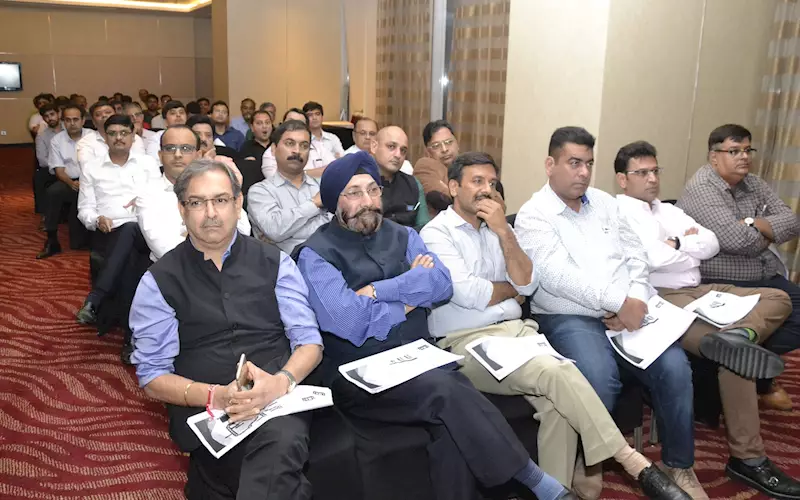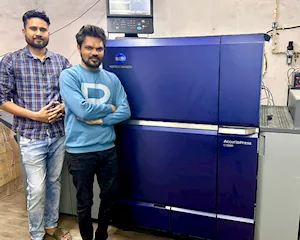A report on the LMAI cost restructuring session
In the recent times, the label industry in India has been facing intense pressure on costs and reduced margins, making it difficult for label printers to sustain the required rapid growth. Leading FMCG companies continue to pressurise their purchase and sales teams to be aggressive to firm up their bottom line as also their top line. As far as printers are concerned, both these measures are adversely affecting them. While a better top line for end users of labels even though it translates into h
29 Aug 2016 | By Harveer Sahni
When suppliers started resisting reduction in prices, buyers unleashed the dreaded tool of reverse auction, thereby putting label industry peers in confrontation amongst themselves. Despite despising the process, and most printers agreeing that it is a dent on their balance sheets, to retain the sales volumes, the printers still participate in reverse actions.
In earlier days, it was simple to pass on the fall in price to labelstock manufacturers but intense competition, increasing paper and polymer prices have pushed even the labelstock producers against the wall. With wafer-thin margins, they have their hands already in the air.
Modernisation is another imperative that has to be indulged in on an ongoing basis. Print buyers show preference to suppliers who possess top of the line label presses with enhanced capability to print convert and decorate labels with multiple printing technologies. Capital equipment acquisition costs continue to escalate and indulgence in it brings increased debt to be serviced on depleting margins.
ROI is now a word that stirs worries for most printers. A growing market makes economies of scale a necessity to retain market share and margins needed to service increasing liabilities and expenses. Increased sales means higher inventory levels and larger working capital requirements, further increasing the borrowings.
Indian label printers decided to huddle together in an effort to dwell on this dilemma and try to find a lasting solution that would facilitate faster growth and stem the depleting margins. Sensing the mood and needs of its members, Industry association LMAI (Label Manufacturers Association of India) organised a ‘Cost Restructuring Session’ in Mumbai on 19 August 2016.
Normally, at such meets supplier members are not invited, as the first attempt will be to try and reduce cost of the inputs, which may put the suppliers in an embarrassing situation or in direct confrontation with their customers. However, the LMAI management thought differently and considering them as stakeholders in the industry, they invited suppliers to join in, witness the proceedings and understand their situation.
It sure was interesting to note that leading suppliers of materials and equipment like Avery, UPM, SMI, Gallus, Labelplanet, Weldon, Genius, Fujifilm, HP, Electro Optic, Henkel, BST, Multitec, S Kumar and many others attended this meet. Many of the leading suppliers gave their suggestions and inputs on how they felt printers could produce more cost effectively and add to the receding margins or stem the slide.
Over 100 delegates attended the meeting, out of which almost 70% were printers. Some of the most prominent printers seen were Arvind Shekhar from Sai Security, Bangalore; Chandan Khanna, Ajanta; Manish Desai, Mudrika; Vivek Kapoor, Creative; Sandeep Zaveri, Total Print; Denver, Janus; Gautam/ Venkataraman, Skanem Interlabels; Rajesh Nema, Pragati Indore; Mahendra, Manohar Packaging; Amar Chhajed, Webtech; Karan Kapur, JK Fineprints; Sandhya, Synergy; Jignesh Dani, Maharshi Ahmedabad; Sanjeev Sondhi, Zircon and many more.
Rajesh Nema, the host for the evening welcomed the guests and called upon Sandeep Zaveri, president, LMAI to give the opening address.
Zaveri stressed on the need for printers to put their minds together on this crisis like situation facing them. He stressed the need to shun reverse auctions and demand from customers a basic per square meter price, below which no one should sell. He impressed upon the members to debate, discuss and arrive at a consensus, if not now then at least at the next meet that they plan on the issue. There is a pressing need for formulating a costing pattern that incorporates essential inputs besides labelstocks to justify the resultant profit to be enough to service their operations.
Satish Wakchaure of Saicom Systems and Samir Patkar from Gallus took the stage next. Their joint presentation listed the pitfalls at length and shared the dangers of low pricing in competition amongst themselves. While Satish listed the difficulties and shared the envisaged consequences in this path, Samir Patkar went about listing solutions to produce cost effectively with lesser downtimes, lower wastages, and stemming the outflow due to not using expensive equipment to optimum capacity.
They summed it up by suggesting printers the steps that would definitely help them improve their profitability. These include demanding development costs from customers, either shunning reverse auction or learning to say no beyond a certain point; investing in expansion wisely and planning reachable ROI with new generation equipment; using full capacity of machines; reducing wastages; producing better quality, not larger quantity; not settling for too long credit periods; do all finishing online as offline converting adds to cost and finally try to get a higher price for work.
Taking the topic further Ajay Mehta, MD, SMI gave his suggestions for label printers to drive in better margins and tighten their belts to stay in the reckoning.
Chartered accountant Deepa Lodha made an eye-opening presentation on the label printing companies, as commissioned by LMAI to carry out this investigation. She perused the financials of 77 label companies in depth. The largest percentage at 42% of these 77 companies are located in the West, followed by 27% in North, 23% in South and mere 8% in Central and East India. Only 9% or seven companies have a turnover of over Rs 50 crore, 31% are less than Rs 5 crore, 38% are between Rs 5-20 crores and 22% between Rs 20-50 crore. The revenue growth of these 77 companies from 2013-14 to 2014-15 is 14%.
However, this cannot be the reflection of the exact growth rate in India, as these companies are only printing in roll form. There is a huge, almost similar volumes coming from plain VIP labels and the sheet market. That market is experiencing substantial growth due to extensive use of barcodes in organised retail.
The following are some of the key conclusions of the report:
- Not enough Profit: Six companies out of 77 do not generate enough profit to pay their interest. One in every five reported loss at net level
- Low asset turnover: 41 companies reported sales lower than total assets
- ROE: Six to eight percent improvement in ROE (return on equity) needed to make returns meaningful for promoters. They need to get 5-7% higher prices, tighter management of receivables/inventory and better utilization of assets
- Efficiency needed: Few inefficient or loss-making companies could exit business
Pankaj Bhardawaj of Avery Dennison spoke briefly about better profitability. He also dwelled on sustainability. Past president Vivek Kapoor took the interactive session inviting printers’ opinion and thoughts on the subject they were discussing. Renuka Uchil informed the gathering about forthcoming label awards and appealed to the label printers to participate in big numbers.
(Harveer Sahni is the managing director of Weldon Celloplast)














 See All
See All